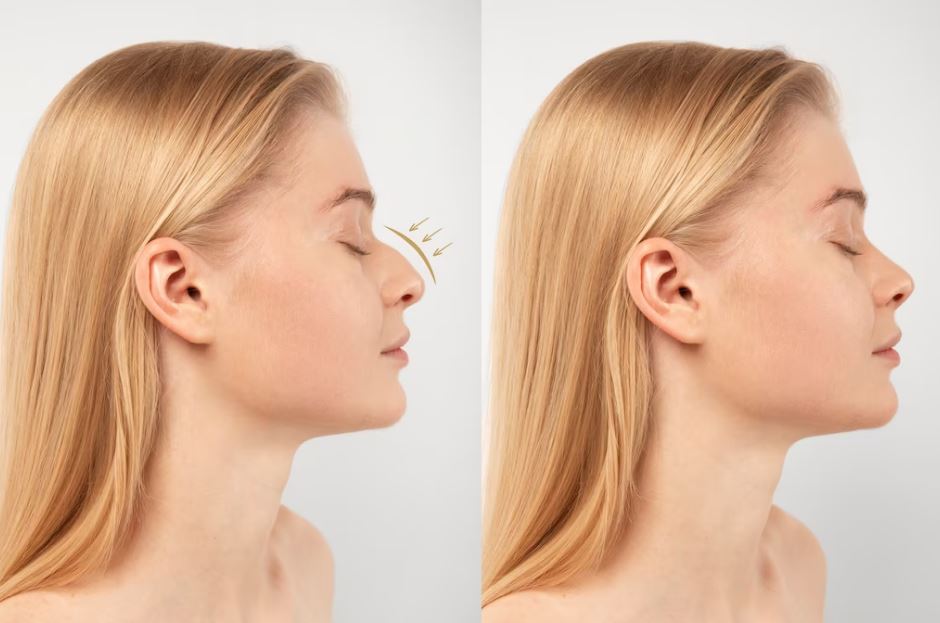The nose is the facial area located in the middle of the face and stands out first. The nose is both an aesthetically important part of the face and an important organ for breathing, as it is the first part of the respiratory tract. There may be the following problems with the nose:
- The shape may be long, low, wide or arched depending on the patient's facial proportions,
- There may be breathing problems due to curvature of the inner curtain of the nose,
- There may be difficulty in breathing due to weakness in the nose wings,
- Nostrils may be very wide,
- Especially in allergic people and people with curvature of the inner curtain of the nose, swelling and enlargement of the turbinates (popularly known as nasal concha) may occur,
Before the surgery, a detailed interview and examination is made, blood tests, heart electrocardiography and lung x-ray are taken, and the approval of the anesthesiologist is obtained.
The surgery is performed in a full-fledged hospital under general anesthesia (full sleep) and the surgery takes approximately 1-2 hours.
The surgery is performed with a small incision at the tip of the nose, which is called open, or with an incision made entirely in the inner part of the nose, which is called closed. During the surgery, the bones and cartilages are shaped appropriately, if necessary, the curvatures in the inner curtain of the nose are corrected and the nasal concha, called turbinates, are intervened and reduced in size.
During the surgery, a silicone tampon is placed in the patient's nostrils and a plastic splint is placed on the nasal skin. Cold application is applied to prevent or minimize swelling and bruising around the eyes. The patient is fed after 4-6 hours, can eat, drink and take care of himself on the same day, is hospitalized for one day and discharged the next day.
At the end of the first week, silicone pads are removed, if the open technique is performed, the stitches are removed and the splint is changed. At the end of the second week, the last splint is removed.
After the surgery, edema develops in the nose, this edema subsides within months and the real nose shape emerges.
Secondary Nose Surgery
Patients may have problems with shape or breathing due to previous surgery, or serious deformities in their noses and breathing problems due to blows to the nose after surgery. In such patients, if the problem is not too severe, the problems can be solved with a repeat surgery without using additional cartilage support, but if the problem is serious, cartilage pieces taken from the ear or ribs may be needed to solve the problems and rebuild the main skeleton of the nose.
Secondary nose surgery is always more difficult for the surgeon and its success may be slightly lower than for those who have surgery for the first time.
When there is weakness or deficiency in the main skeleton of the nose, it may be necessary to provide support with a piece of cartilage taken from the ear or rib. When cartilage is removed from the ear, there is no deformity in the ear. When it is removed from the rib, there is no breathing problem in the rib cage and the lungs are not damaged.
It is important to have a detailed interview and examination before the surgery, and if necessary, a computerized tomography to reveal the problem in detail and find a solution to the problem. Again, before the surgery, blood tests, heart electrocardiography and lung x-ray are taken, and the approval of the anesthesiologist is obtained.
The surgery is performed in a full-fledged hospital under general anesthesia (full sleep) and the surgery takes approximately 1 to 3 hours.
The surgery is performed with a small incision at the tip of the nose, which is called open, or with an incision made entirely in the inside of the nose, which is called closed. During the surgery, the cartilage tissue taken from the ear or rib is shaped appropriately and support is provided for the nose roof, nose dorsum, nose wings and nose tip. If necessary, the curvatures in the inner curtain of the nose are corrected and the nasal concha, called turbinates, are intervened and reduced in size.
During the surgery, a silicone tampon is placed in the patient's nostrils and a plastic splint is placed on the nasal skin. Cold application is applied to prevent or minimize swelling and bruising around the eyes. The patient is fed after 4-6 hours, can eat, drink and take care of himself on the same day, and is hospitalized and discharged in one day.
At the end of the first week, silicone pads are removed, if the open technique is performed, the stitches are removed and the splint is changed, and at the end of the second week, the last splint is removed.
After the surgery, edema develops in the nose. This edema may be more than the first nose surgery, but it will decrease and disappear within months and the real nose shape will emerge.
Contact us for more detailed information.
 EN
EN TR
TR
